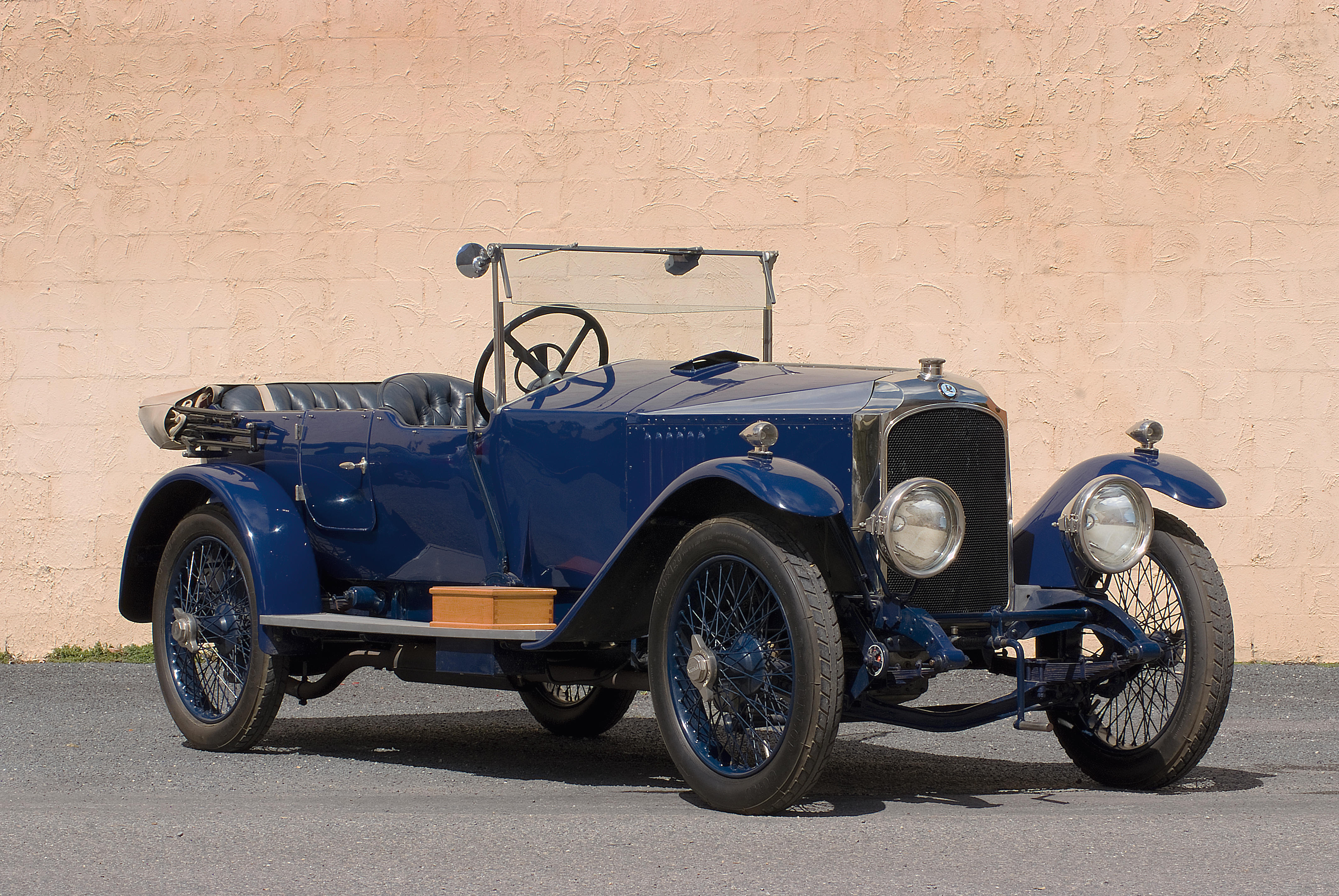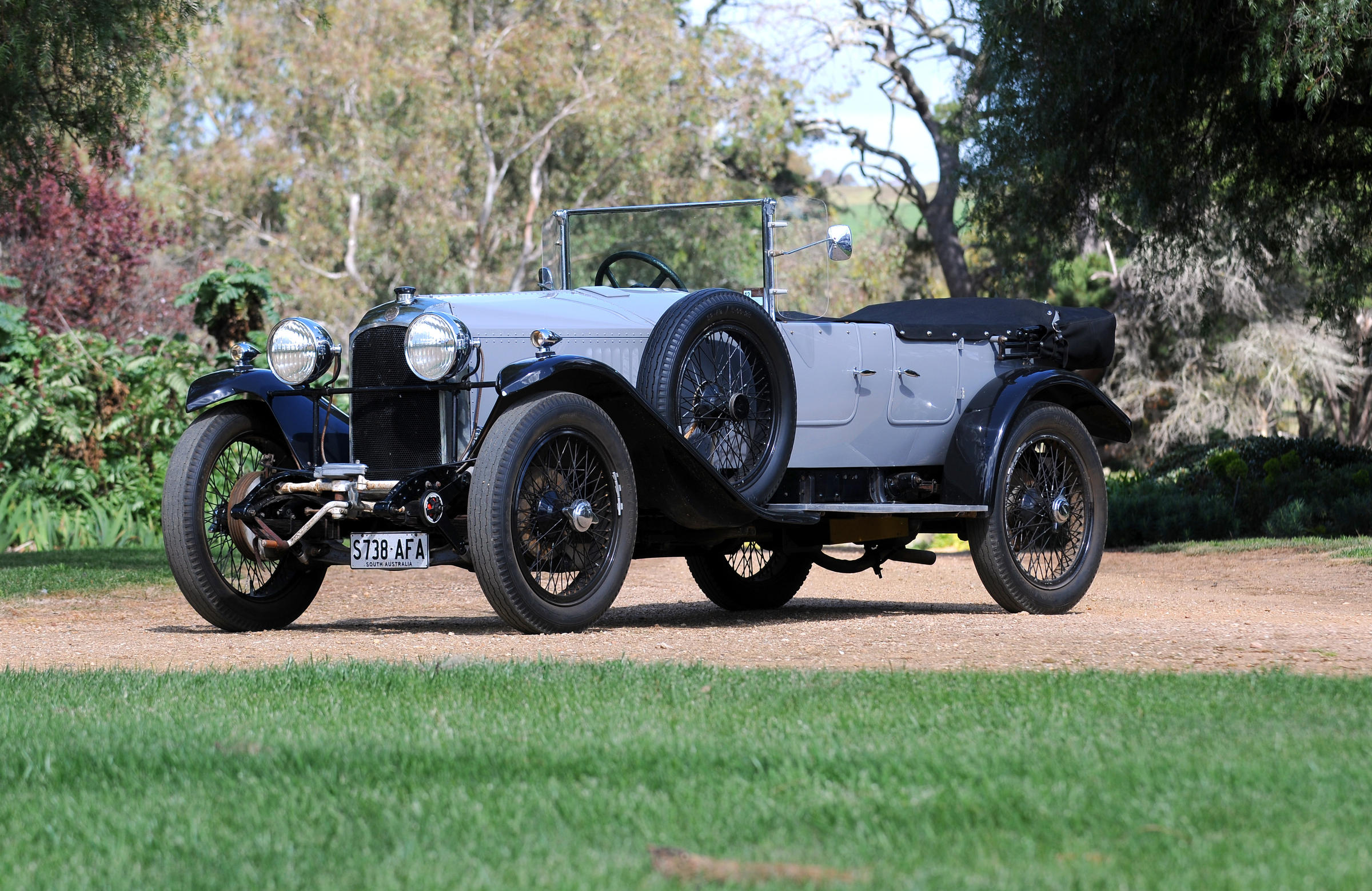Description With characteristic humility W.O. was constantly amazed by the enthusiasm of later generations for the products of Bentley Motors Limited, and it is testimony to the soundness of his engineering design skills that so many of his products have survived. From the humblest of beginnings in a mews garage off Baker Street, London in 1919 the Bentley rapidly achieved fame as an exciting fast touring car, well able to compete with the best of European and American sports cars in the tough world of motor sport in the 1920s. Bentley’s domination at Le Mans in 1924, 1927, 1928, 1929 and 1930 is legendary, and one can only admire the Herculean efforts of such giants as Woolf Barnato, Jack Dunfee, Tim Birkin and Sammy Davis, consistently wrestling the British Racing Green sports cars to victory. W O Bentley proudly unveiled the new 3-litre car bearing his name on Stand 126 at the 1919 Olympia Motor Exhibition, the prototype engine having fired up for the first time just a few weeks earlier. Bentley’s four-cylinder ‘fixed head’ engine incorporated a single overhead camshaft, four-valves per cylinder and a bore/stroke of 80x149mm. Twin ML magnetos provided the ignition and power was transmitted via a four-speed gearbox with right-hand change. The pressed-steel chassis started off with a wheelbase of 9’ 9½”, then adopted dimensions of 10’ 10” (‘Standard Long’) in 1923, the shorter frame being reserved for the TT Replica and subsequent Speed Model. Rear wheel brakes only were employed up to 1924 when four-wheel Perrot-type brakes were introduced. In only mildly developed form, this was the model that was to become a legend in motor racing history and which, with its leather-strapped bonnet, classical radiator design and British Racing Green livery, has become the archetypal Vintage sports car. Early success in the 1922 Isle of Man Tourist Trophy, when Bentleys finished second, fourth, and fifth to take the Team Prize, led to the introduction of the TT Replica (later known as the Speed Model) on the existing 9’ 9½” wheelbase, short standard chassis. Identified by the Red Label on its radiator, the Speed Model differed by having twin SU ‘sloper’ carburettors, a higher compression ratio, different camshaft and the close-ratio A-type gearbox, the latter being standard equipment prior to 1927 when the C-type ‘box was adopted. These engine changes increased maximum power from the standard 70 to 80bhp and raised top speed to an impressive 90mph. Other enhancements included the larger (11-gallon) fuel tank and (usually) Andre Hartford shock absorbers. Bentley made approximately 1,600 3-Litre models, the majority of which was bodied by Vanden Plas with either open tourer or saloon coachwork. This fabulous matching-numbers Bentley left the works in 1926, fitted with an Open Sports body supplied by Vanden Plas. Registered in the United Kingdom with the number YN 9348, the proud first owner was a Mr. C.G. Baxster. Pleasingly this 3 Litre is offered in unmolested and unmodified condition, as shown in the Dating Certificate supplied, which was signed in 2006 by Mr. Michael Worthington-Williams of The Society of Automotive Historians. Notably chassis SR 1421 is also referred to in Michael Hay`s book ‘Bentley – The Vintage Years’. Some restoration work was completed in the early 1970s, and although mechanically restored in 2014, the current long-term European owner decided to preserve where possible this wonderful car’s patina. Invoices for the mechanical work, at a cost of c.€70.000, are available in the car’s file. Words can barely express how much of an opportunity this vintage Bentley provides; an original 3 Litre short-chassis Bentley, with its original engine. Simply unrepeatable and not to be missed. Next Lot » Enquire Your name Email Telephone Message Type your message Search Enter the make/model/year you are interested in
Description With characteristic humility W.O. was constantly amazed by the enthusiasm of later generations for the products of Bentley Motors Limited, and it is testimony to the soundness of his engineering design skills that so many of his products have survived. From the humblest of beginnings in a mews garage off Baker Street, London in 1919 the Bentley rapidly achieved fame as an exciting fast touring car, well able to compete with the best of European and American sports cars in the tough world of motor sport in the 1920s. Bentley’s domination at Le Mans in 1924, 1927, 1928, 1929 and 1930 is legendary, and one can only admire the Herculean efforts of such giants as Woolf Barnato, Jack Dunfee, Tim Birkin and Sammy Davis, consistently wrestling the British Racing Green sports cars to victory. W O Bentley proudly unveiled the new 3-litre car bearing his name on Stand 126 at the 1919 Olympia Motor Exhibition, the prototype engine having fired up for the first time just a few weeks earlier. Bentley’s four-cylinder ‘fixed head’ engine incorporated a single overhead camshaft, four-valves per cylinder and a bore/stroke of 80x149mm. Twin ML magnetos provided the ignition and power was transmitted via a four-speed gearbox with right-hand change. The pressed-steel chassis started off with a wheelbase of 9’ 9½”, then adopted dimensions of 10’ 10” (‘Standard Long’) in 1923, the shorter frame being reserved for the TT Replica and subsequent Speed Model. Rear wheel brakes only were employed up to 1924 when four-wheel Perrot-type brakes were introduced. In only mildly developed form, this was the model that was to become a legend in motor racing history and which, with its leather-strapped bonnet, classical radiator design and British Racing Green livery, has become the archetypal Vintage sports car. Early success in the 1922 Isle of Man Tourist Trophy, when Bentleys finished second, fourth, and fifth to take the Team Prize, led to the introduction of the TT Replica (later known as the Speed Model) on the existing 9’ 9½” wheelbase, short standard chassis. Identified by the Red Label on its radiator, the Speed Model differed by having twin SU ‘sloper’ carburettors, a higher compression ratio, different camshaft and the close-ratio A-type gearbox, the latter being standard equipment prior to 1927 when the C-type ‘box was adopted. These engine changes increased maximum power from the standard 70 to 80bhp and raised top speed to an impressive 90mph. Other enhancements included the larger (11-gallon) fuel tank and (usually) Andre Hartford shock absorbers. Bentley made approximately 1,600 3-Litre models, the majority of which was bodied by Vanden Plas with either open tourer or saloon coachwork. This fabulous matching-numbers Bentley left the works in 1926, fitted with an Open Sports body supplied by Vanden Plas. Registered in the United Kingdom with the number YN 9348, the proud first owner was a Mr. C.G. Baxster. Pleasingly this 3 Litre is offered in unmolested and unmodified condition, as shown in the Dating Certificate supplied, which was signed in 2006 by Mr. Michael Worthington-Williams of The Society of Automotive Historians. Notably chassis SR 1421 is also referred to in Michael Hay`s book ‘Bentley – The Vintage Years’. Some restoration work was completed in the early 1970s, and although mechanically restored in 2014, the current long-term European owner decided to preserve where possible this wonderful car’s patina. Invoices for the mechanical work, at a cost of c.€70.000, are available in the car’s file. Words can barely express how much of an opportunity this vintage Bentley provides; an original 3 Litre short-chassis Bentley, with its original engine. Simply unrepeatable and not to be missed. Next Lot » Enquire Your name Email Telephone Message Type your message Search Enter the make/model/year you are interested in












Try LotSearch and its premium features for 7 days - without any costs!
Be notified automatically about new items in upcoming auctions.
Create an alert